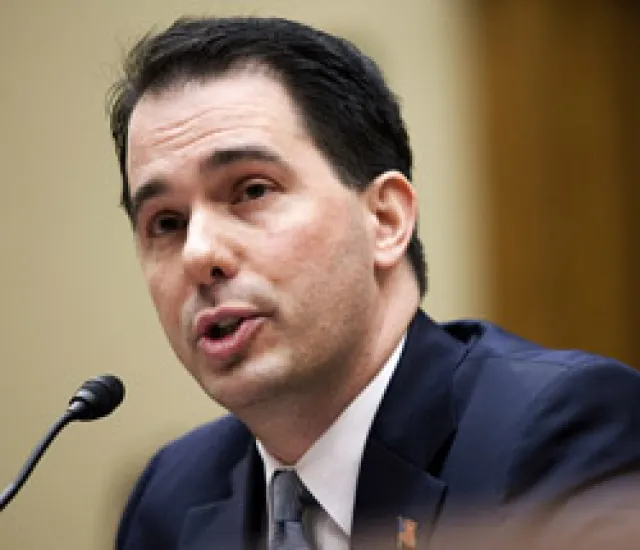Politicians trying to shore up public pension funding who think that curbing unions’ collective-bargaining rights will lower pension costs are wrong.
That is the upshot of an analysis of state and local public plans by the Center for Retirement Research at Boston College, published in a paper titled “Unions and Public Pension Benefits.” It concludes that “unions have no measurable effect on plan generosity or rate of growth in pension benefits, but do have a quantifiable impact on wage levels and perhaps number of workers.”
Public sector pensions are legislated, not bargained, points out the paper. Yet many people believe unions heavily influence public pensions; some cases of rich public employee pensions have gotten plenty of publicity. Study co-author Alicia Munnell, director of the Center, expected to find a link when the research began. “I was trying to follow the money,” she says. “There has been all this confrontation between governments and unions recently about cutting back on pension benefits. I thought I would show that the states that have much stronger unions have higher pensions. That just did not turn out to be the case.”
So some caution is warranted in attacking these issues, Munnell says.
“Where they have problems, there are not necessarily unions,” says Elizabeth Kellar, president and CEO of the Center for State and Local Government Excellence, a nonpartisan research organization, based in Washington, D.C. She points to Wisconsin Governor Scott Walker’s successful showdown with public workers earlier this year over collective bargaining. “Wisconsin already had a well-funded pension plan, so they did not need to make changes in collective bargaining to have a well-funded plan,” Kellar says. “Whatever political interest there was in making changes in collective bargaining had absolutely nothing to do with pension funding. To me those issues are separate.”
The study does point to a couple of factors that tend to lead to higher public pensions. Growth in a plan’s funded ratio during good times had the biggest impact on increasing pensions. “Particularly in the ’90s, when there was extra money, everybody was quite happy to raise pension benefits,” Munnell says. That instinct to score political points based on short-term upticks ultimately has hurt many public plans’ funded status. “One of the big lessons is that even small changes can have a huge impact later,” Kellar says. “My advice to anybody in elected office is to listen to your actuaries and question assumptions.”
The study also found that “mean reversion” — catching up with the neighbors — also helps explain the growth in public pensions. If a state or city releases its public pension benefit, its neighbors often follow. “Competitive pressures tend to drive a lot of the decisions,” Kellar says. If a public employee looks for work in Maryland and Virginia and finds that Maryland has a better compensation and benefits package, that person likely will favor it over Virginia. “If Virginia wants to attract and retain people, it is going to match that,” she says. Also, if a big public plan makes a change, it has a ripple effect on other, smaller plans, she notes.
In many cases boosting public pensions has been the path of least resistance for keeping public employees happy. “In any public environment it is much easier to raise benefits in the future than raise wages today,” Munnell says. “Wage increases are harder to justify. Pension increases where they can defer the funding are much easier to get by.”






